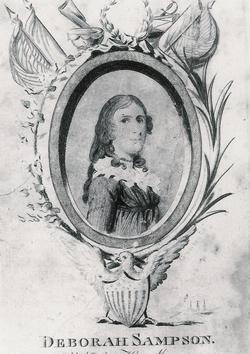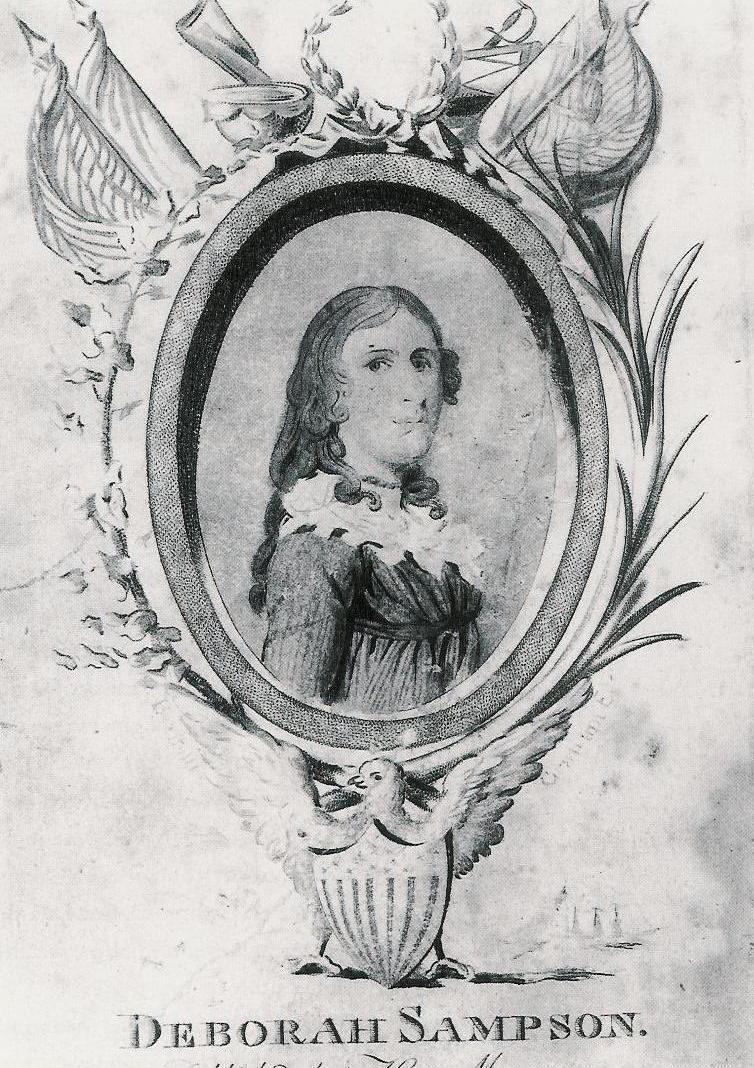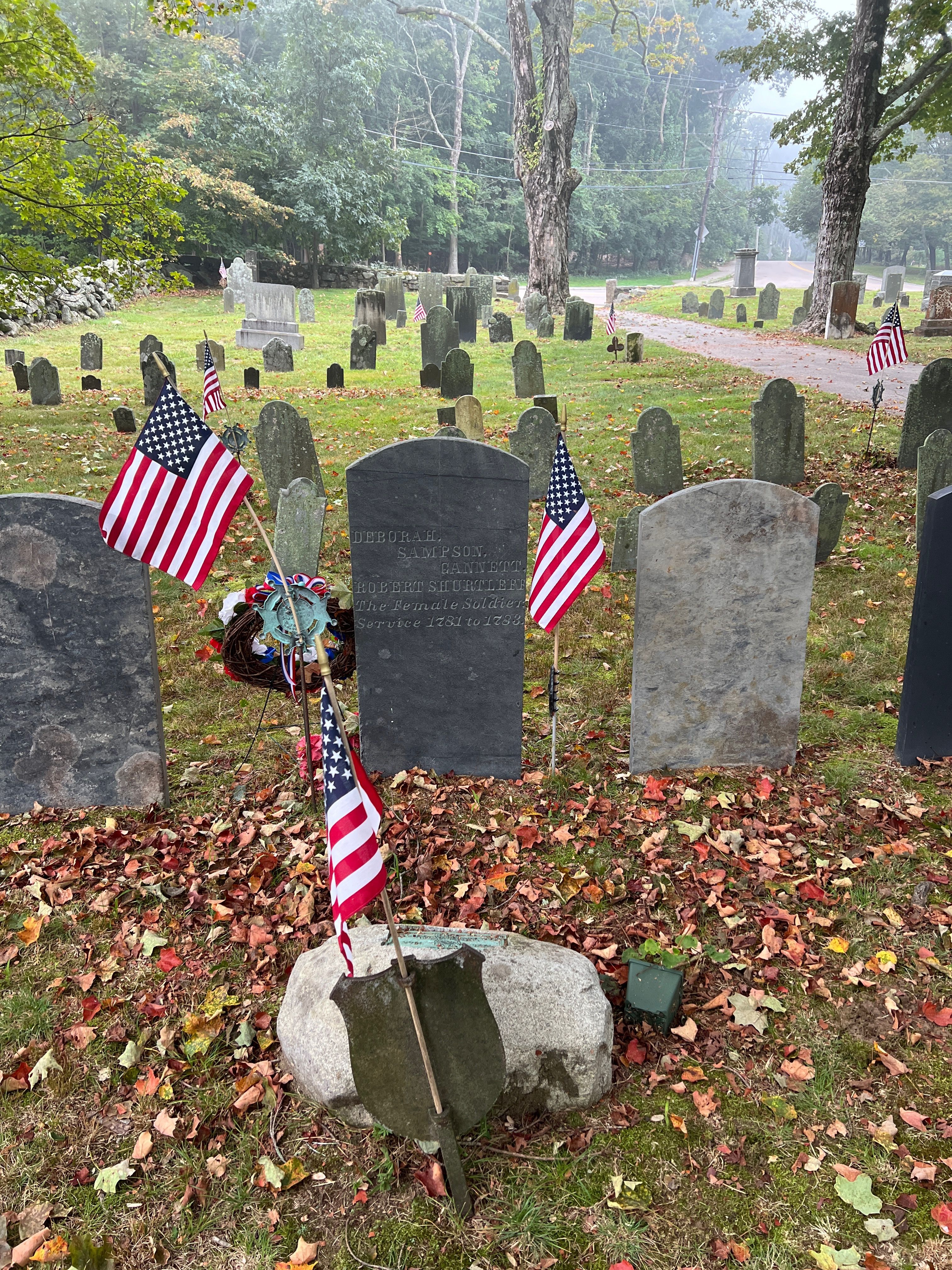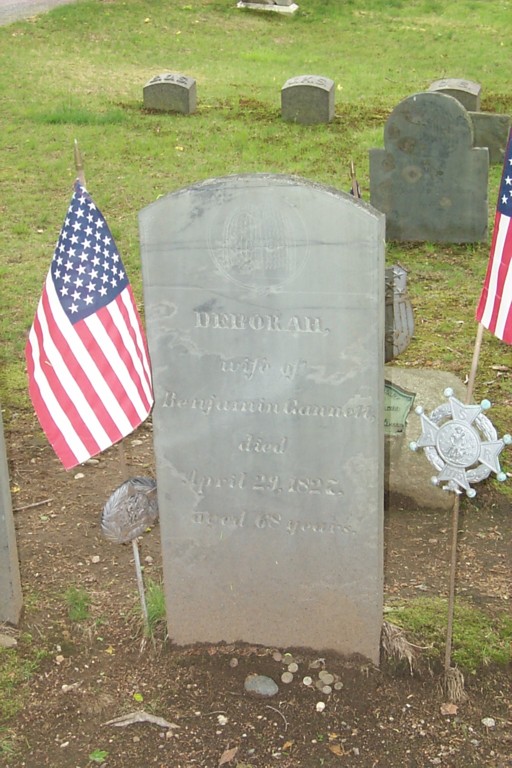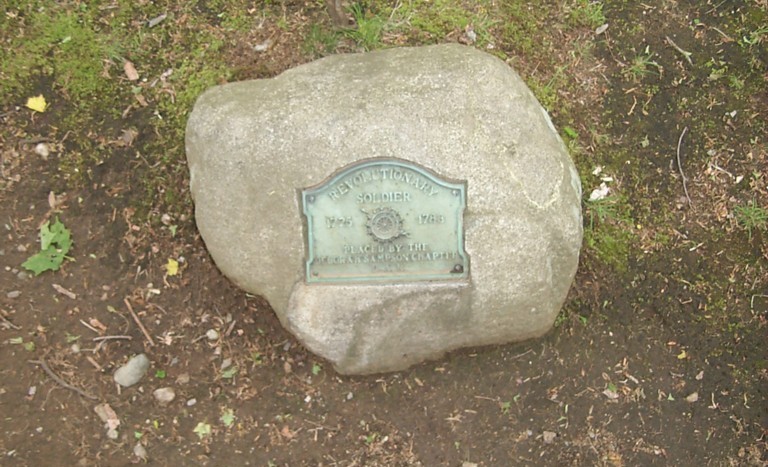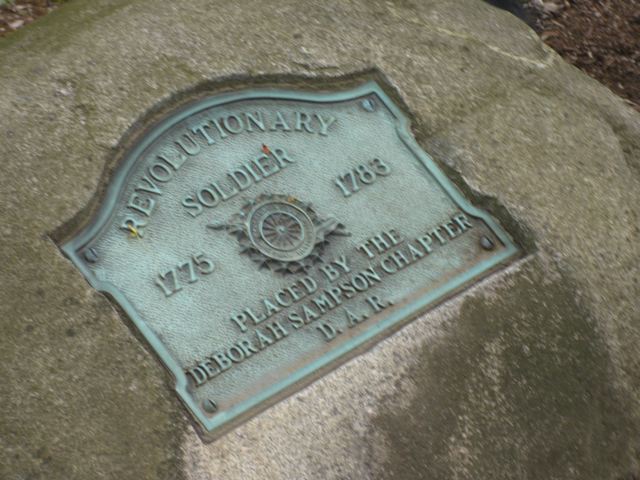Revolutionary War Soldier. She was one of the first known women to disguise herself as a man to join the army, serving bravely in the American Revolution. Much of the details of her life were lost in time, yet her story has been patched together with various documents. Born one of seven children to Jonathan Sampson Jr. and Deborah Bradford Sampson, both of her parents were descendants of preeminent Pilgrims. Her mother was the great granddaughter of Massachusetts Governor William Bradford and her father was a descendent of Myles Standish. Many formal published biographies state that after her father was lost at sea, her penniless mother had to place the children in various homes. Other sources state, that her father did not die at sea but abandoned the family, relocating to Maine, serving in the Revolutionary War, and according to his grave marker, died in 1811. When she was ten years old, she became an indentured servant for eight years to Deacon Benjamin Thomas, a farmer in Middleborough with a large family. Being self-educated, she taught school and was a weaver. According to a recent-found neighbor's diary, in the early 1780s, Sampson first tried to disguise herself as a man to join the army, but was not accepted. Later, she did enlist in the Fourth Massachusetts Regiment of the Continental Army under the name of Robert Shurtleff. At the rank of private, she served as a scout, dug trenches, and fired cannons. None of her fellow soldiers suspected that she was a woman, despite teasing her that she never had to shave. She fought in several battles, and was wounded twice: First with a gash in her forehead from a sword, and then in 1782 she received a left-thigh gunshot wound, from which she removed the bullet. On both occasions, she refused medical attention, fearing her identity would be discovered. After being admitted to a hospital and becoming unconscious with a severe illness, her true identity was discovered by her attending physician. For at least 17 months, she served as a combat soldier. She was honorably discharged on October 23, 1783. On April 7, 1785, she married Benjamin Gannett, and gave birth to two daughters and a son. With the help of Paul Revere's letter to Congressman William Eustis, she received a pension of 34 pounds starting in 1792. She was the only woman to earn a full military pension for participation in the Revolutionary War. After Herman Mann published his romantic version of her war experience in the book, "The Female Review: or, Memoirs of an American Young Lady," she began in 1802 a year-long lecture tour about her experiences. She claimed to have fought at the Battle of Yorktown on October 19, 1781, yet there are documents stating she was not in the army until 1782. After her death, her husband applied for a widower's pension, which was eventually granted, but before the pension could be issued, he died ten years after her death. She was named official heroine of Massachusetts in 1983.
Revolutionary War Soldier. She was one of the first known women to disguise herself as a man to join the army, serving bravely in the American Revolution. Much of the details of her life were lost in time, yet her story has been patched together with various documents. Born one of seven children to Jonathan Sampson Jr. and Deborah Bradford Sampson, both of her parents were descendants of preeminent Pilgrims. Her mother was the great granddaughter of Massachusetts Governor William Bradford and her father was a descendent of Myles Standish. Many formal published biographies state that after her father was lost at sea, her penniless mother had to place the children in various homes. Other sources state, that her father did not die at sea but abandoned the family, relocating to Maine, serving in the Revolutionary War, and according to his grave marker, died in 1811. When she was ten years old, she became an indentured servant for eight years to Deacon Benjamin Thomas, a farmer in Middleborough with a large family. Being self-educated, she taught school and was a weaver. According to a recent-found neighbor's diary, in the early 1780s, Sampson first tried to disguise herself as a man to join the army, but was not accepted. Later, she did enlist in the Fourth Massachusetts Regiment of the Continental Army under the name of Robert Shurtleff. At the rank of private, she served as a scout, dug trenches, and fired cannons. None of her fellow soldiers suspected that she was a woman, despite teasing her that she never had to shave. She fought in several battles, and was wounded twice: First with a gash in her forehead from a sword, and then in 1782 she received a left-thigh gunshot wound, from which she removed the bullet. On both occasions, she refused medical attention, fearing her identity would be discovered. After being admitted to a hospital and becoming unconscious with a severe illness, her true identity was discovered by her attending physician. For at least 17 months, she served as a combat soldier. She was honorably discharged on October 23, 1783. On April 7, 1785, she married Benjamin Gannett, and gave birth to two daughters and a son. With the help of Paul Revere's letter to Congressman William Eustis, she received a pension of 34 pounds starting in 1792. She was the only woman to earn a full military pension for participation in the Revolutionary War. After Herman Mann published his romantic version of her war experience in the book, "The Female Review: or, Memoirs of an American Young Lady," she began in 1802 a year-long lecture tour about her experiences. She claimed to have fought at the Battle of Yorktown on October 19, 1781, yet there are documents stating she was not in the army until 1782. After her death, her husband applied for a widower's pension, which was eventually granted, but before the pension could be issued, he died ten years after her death. She was named official heroine of Massachusetts in 1983.
Bio by: Linda Davis
Inscription
In honor of Deborah Sampson who for love of country served two years as a soldier in the War of the Revolution. She was born in Plympton, Massachusetts December 17, 1760 This memorial erected by the Deborah Sampson Chapter of Daughters of the American Revolution of Brockton and the town of Plympton 1906
Family Members
Advertisement
